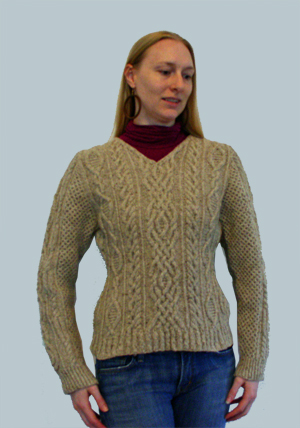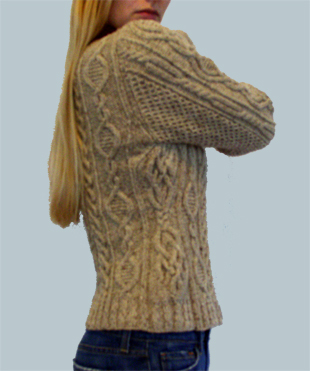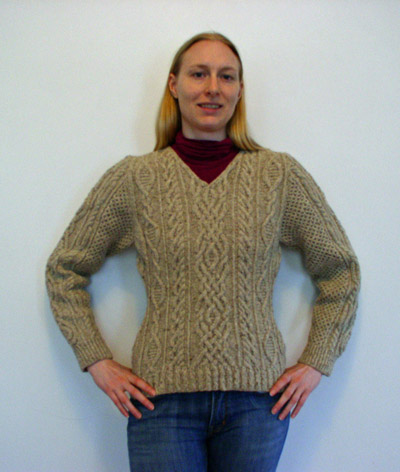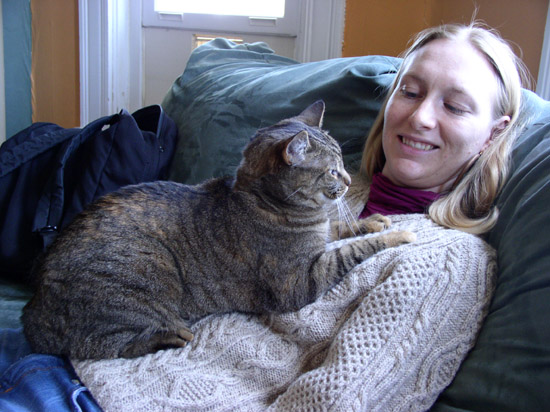I want to make a heavily modified Oak Leaf Family Tree pullover, which centers around this amazing acorn-and-leaf cable... I've chosen some coordinating cables, I have the yarn and needles, but I don't want to do it right now. I have too much other stuff on my plate. I am, however, happy to say I've figured out my leaf technique, thanks to this swatch.

That swatch is using a different method every time a small stem branches off of the large stem, and it plays with acorn spacing and acorn decrease methods too. And leaf increases. The winners are:
- The acorn should be 3 purls away from the main stem, not just two as the pattern has it (see the top right acorn). The extra stem movement is easily added by a single 1-over-1 cable cross on the wrong side.
- Speaking of cable crosses, 1-over-1 cable crosses are (for me) a cleaner way of moving the little stems than increasing on one side and decreasing on the other.
- The acorn should be closed off with a k5tog rather than a centered decrease, but it has to be tight (see the lower left acorn).
- The best way (that I found) to introduce a new knit stitch into a 2-stitch stem as a small stem branches away is to increase an extra purl stitch a couple of stitches away from the stem, then use a 1-over-1 cable cross to move one original stem stitch away to form the new smaller stem; as the extra purl stitch crosses underneath, it turns into a knit stitch. Everything stays tight, and continuity is maintained between the small stem and the larger one (see the topmost branching).
- My favorite double increase for the middle of the leaf is k1, leave stitch on needle, k1 into stitch below, k1 into the first stitch again. This leaves a "vein" in the middle (see the left upper leaf).
I'll want these notes, probably next winter. I've decided that since I'm using the same yarn I used for the Hourglass Aran, I'd be wise to wait and see how that wears during its first season. There may be things I'll want to adjust for as I prepare to make this next fancy cabled sweater.
In the meantime I'm enjoying knitting up someone else's cleverness, as well as designing a simple (but small-gauge) anniversary sweater for my husband.














